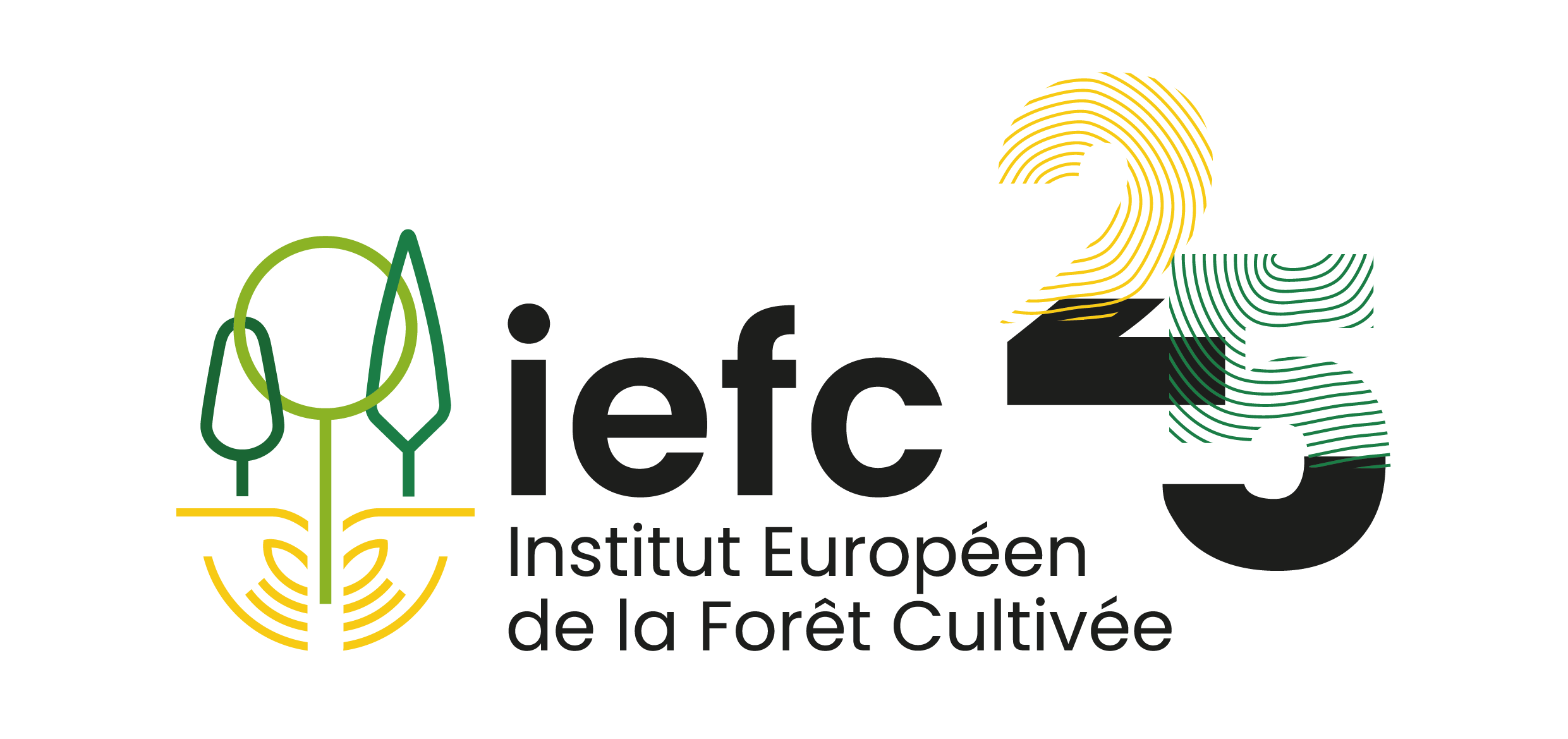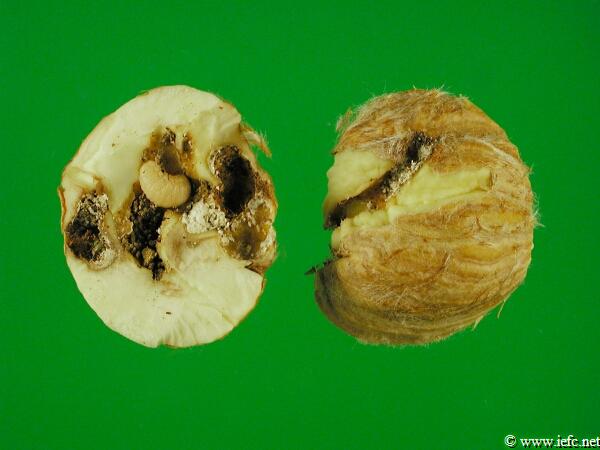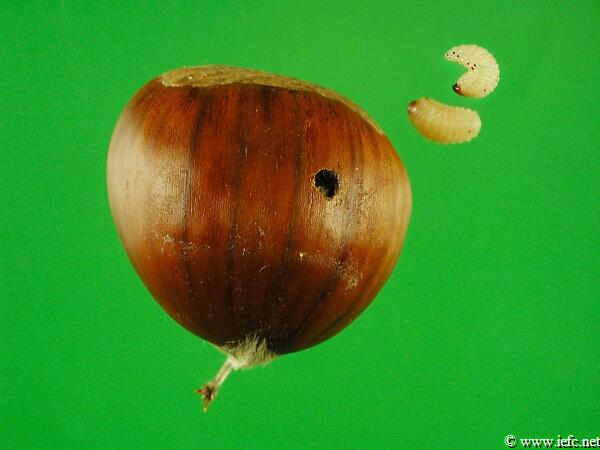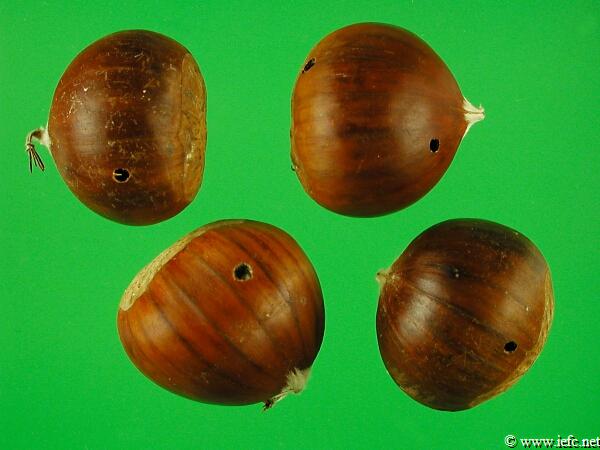Chestnut weevil
Curculio elephas (Gyllenhal) (Coleoptera, Curculionidae)
synonym: Balaninus elephas
Host tree
Chestnut trees (Castanea sativa) and oak species (Quercus).
Identification
- Chestnuts with a brown puncture scar at the base due to egg laying by the weevils.
- Chestnuts turn brown and drop.
- Presence of white larvae (7-12 mm long) within chestnuts. Larvae are curved in a C-shape, legless and have a brownish head (Photo 1 and 2).
- Galleries inside chestnuts filled with brown and compact faeces (Photo 1).
- Fruits with round exit holes (2-3 mm) made by larvae leaving the fruit (Photo 2 and 3).
- Possible confusion with lepidopteran caterpillars, which have legs and are not curved in a C-shape, the most common is the Chestnut tortrix (Cydia splendana).
- Brownish to greyish weevils, about 1cm long with a small head and a large rostrum (snout).
Damage
- Fruits are unsuitable for fresh consumption and the cost of preparing chestnut products increases.
- Attacked chestnuts are more susceptible to fungi.
Biology
- There is one generation per year.
- Adult weevils are present from August to September; females bore a hole trough the bur and lay an egg inside the fruit.
- Larvae feed on chestnuts from October to November.
- After complete development larvae move out from the fallen fruits and dig into the soil at a depth of about 10-15 cm.
- Larvae remain in the ground during winter and spring. Pupation occurs from June to August.
- Some larvae may rest in the soil for more than one year allowing population survival in years of very low fruit production.
Risk factors
- Attacks are more intense in years of poor fruit production following years with high seed production.
- Stressed plants are more predisposed to attacks.
- Cultivars differ in their susceptibility to attacks.
- Cultivars presenting burs with sparse spines are more susceptible than burs with dense spines.
- Attacks are severe in poor soils and thin, stony soils.
Distribution
- Present mainly in southern and Central Europe, parts of North Africa and the Middle East. Not recorded from northern Europe.
Pest management
Monitoring
- Randomly fruit sampling using nets on the ground beneath the trees to estimate the percentage of attacked fruits per tree and per stand.
Preventive measurements
- Removal of all chestnuts from the ground.
- Removal of weeds and grasses beneath the trees before fruit production. This allows observing and collecting more easily all dropped fruits from the trees.
- Pruning of the trees, which favours more vigorous fruits.
- Use of resistant cultivars or clones if available.
Curative control
- Soil mobilisation during winter or spring exposes and thereby kills a large number of weevils in the soil. However it is recommended to avoid deep mobilisation (no deeper than 10-15 cm) and to avoid the vicinity of the tree trunk, especially in areas with risk of Phytophthora damage.
- Insecticides should not be used and are not registered in Europe in forests. Their use in chestnut orchards should follow national legislations.
Climate change
- Effects of climate change are difficult to assess. The weevil will most probably react to changes on host tree occurrence and physiology. Since it is more prone to attack stressed trees, increased damage is to be expected in regions where chestnuts and oaks will suffer from drought and heat stress(e.g. southern Europe).
- The weevil is expected to invade new areas north of its present distribution, as these become climatically more favourable.



